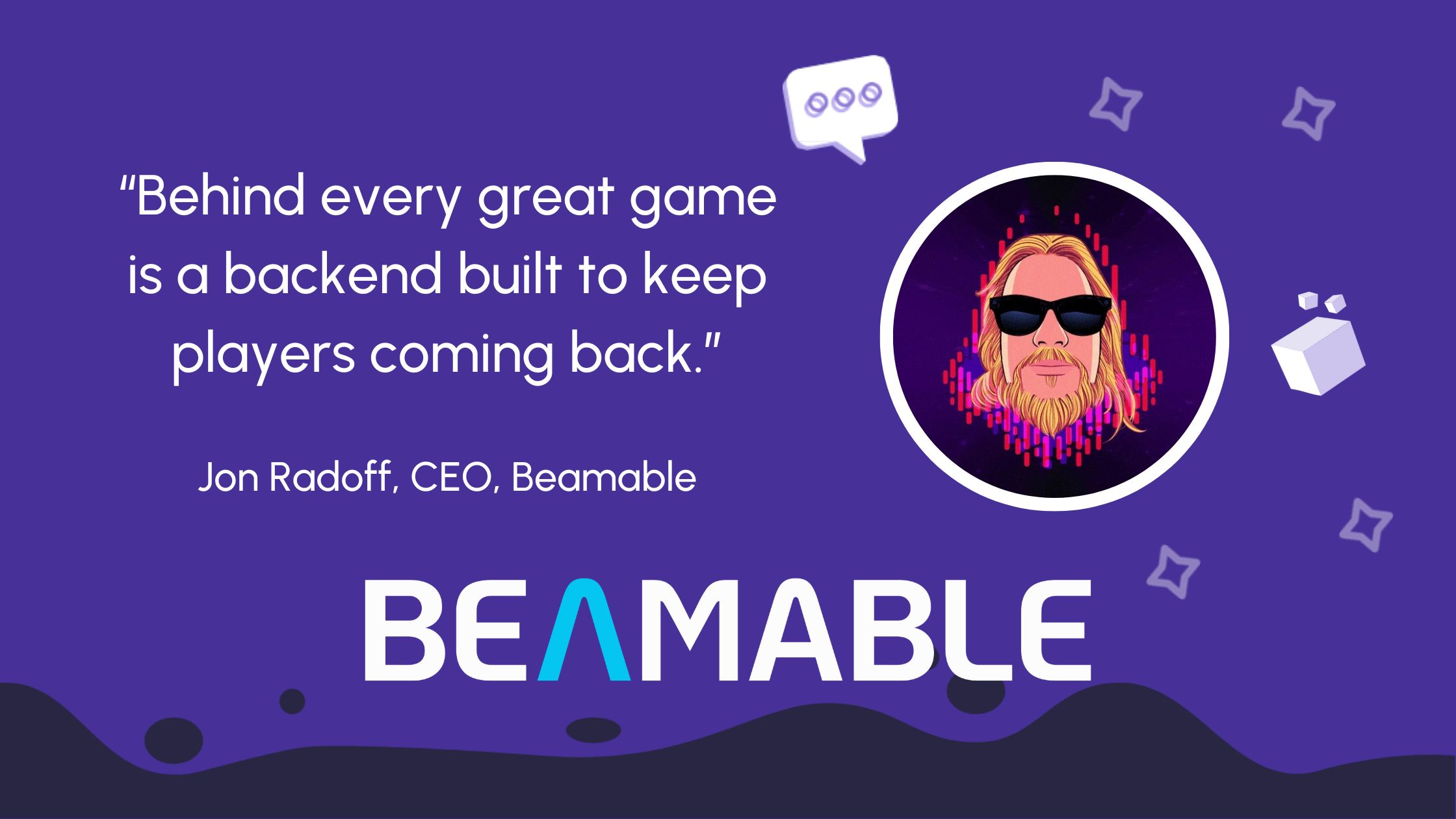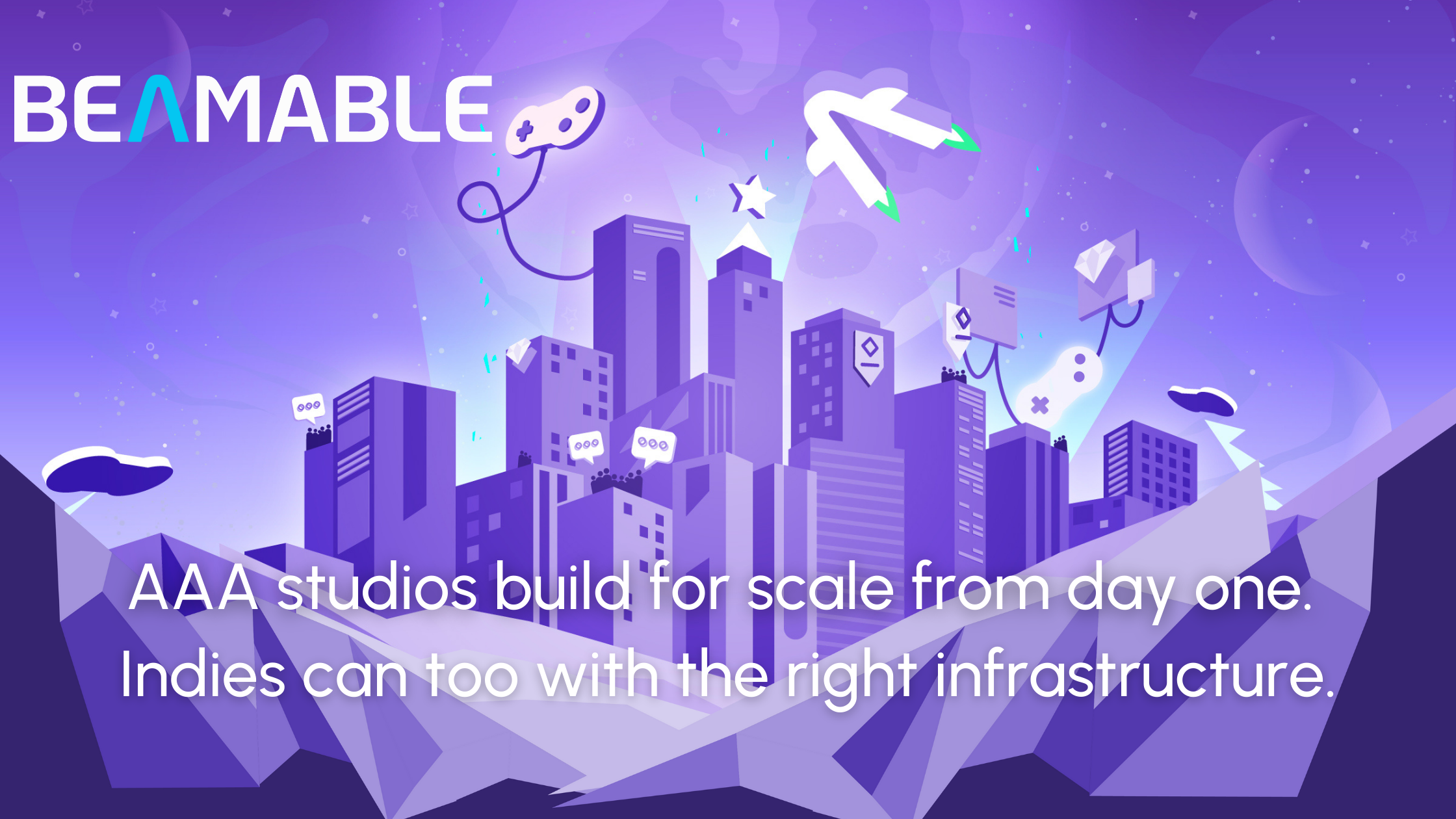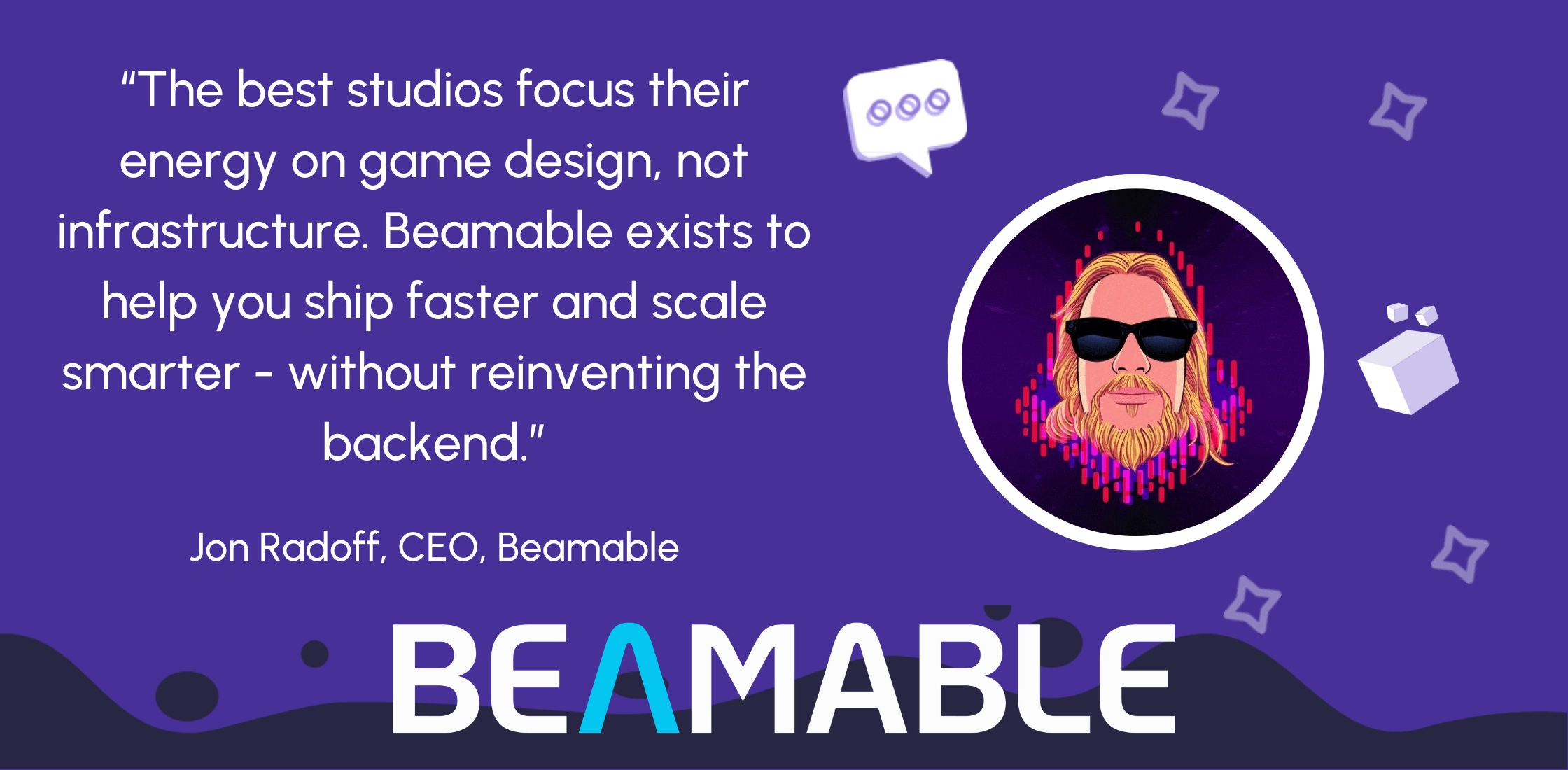Prototyping your game faster with Unity and Beamable

Prototyping your game faster with Unity and Beamable
When building a successful game, you will need to get really comfortable with the process of trying, learning, and iterating with rapid prototypes. You can have an idea about how something will work in your game, but until you experience it directly, you won’t know for sure. This goes for your core game experience, as well as all of the user flows and interfaces around the “metagame” (described below) as well.
We’ve built Beamable to help with the prototyping process by allowing you to implement your core game and your metagame at the same time, ensuring that you can get a global feel for how your game will work and how players will experience all game features.
In this short article, we’ll look at prototyping in general, and how Beamable can speed you up!
What is game prototyping?
Game prototyping is the process of answering questions regarding the feasibility of what you aspire to build. If it’s a mobile app, your prototype will answer questions about usability, features, and the economic viability and capital requirements of what you want to include.
Similarly, for games, a game prototype allows you to experience upfront how your visions will translate into reality. Prototyping is the process of “reality checking” what you think you can do, with what you can actually do. It’s much better to learn failure at the prototype stage than at the point you finally ship your game. Prototyping is about adopting an experimental mindset. You have a hypothesis about how something will work, you rapidly build something to answer that specific question, and see if you are correct.
There are two approaches at the prototyping stage. Both are often used in sequence:
Paper Prototypes
This is where you make use of traditional handwritten methods to convey a sense of the player experience and dynamics of the game. Prototyping on paper will include sketches and/or flow charts and often will include lots of guiding and conversation by the game designer facilitating a simulated game session to gain answers about the gameplay assumptions.
Digital Prototypes
Once enough of the game is hashed out with paper prototypes, it’s helpful to then move to digital prototyping where the same assumptions are now converted into the primary modality of the game. Often the goal of moving from paper to digital is to validate that the game can be played without any guidance by the designer.
What should a prototype try to test?
A prototype can be as sparse or dense as the team working on it can manage to pull off within their schedule. Typically, a prototype will focus on two key game elements:
The Gameplay Loop
At the heart of every game is its gameplay loop which anchors the player in each and every moment that they play the game. It is important to “find the fun” of this core game loop before any major development is done on the game. If the core game loop isn’t fun, no amount of production quality is going to make the game successful. If you have a really fun game prototype, you will have a really fun game.
The Meta Gameplay
Just as important as the core gameplay loop is the metagame. The metagame includes everything the player has to do outside of the core loop. This can include leveling characters, managing inventory, purchasing things, managing timers, and appointment dynamics. Collecting achievements and badges, etc. The metagame will provide a huge reason for your players to come back every day. Maybe they come back to climb a leaderboard against other players? Maybe they come back to unlock new items with login bonuses? Maybe they come back to collect idle goods that have piled up? Once you find the fun in the core game loop, you need to find the right metagame that provides players exciting new things to achieve and explore long after they start playing.
When is the right time to begin prototyping?
There are two approaches to prototyping:
Prototype Before Production
The most common approach is to do all of your prototyping before the game even enters any real state of production. This is a very linear development paradigm where you make sure you’ve fully prototyped and validated all aspects of the game so that you can be most confident about the production timeline and capital requirements.
Prototype Iteratively During Production
It may seem counterintuitive to prototype during production itself, but it has some valuable advantages. Prototyping on the fly allows the team to test out new features they want to put in the game in isolation of the main game itself, iterate it, and then they can implement it swiftly without disturbing all the other work that has been done!
How can Beamable help with prototyping?
With Beamable, you get a convenient software development kit (SDK) that allows you to integrate various features in your game, including drag-and-drop feature prefabs inside Unity, as well as other features like commerce and content management, as well as social offerings!
Given the kind of game you want to make, some of these features may be more useful than the others. But what is guaranteed is that there is a lot of scope for your development time to get drastically reduced as a result of Beamable! You can save on all the time it’ll take to implement these features. Basically, with Beamable in your toolkit, you can focus all your energy on the gameplay elements that matter – story, art, progression, and anything else!
Here are some of Beamable’s features:
Admin Flow
This creates a UI for cheats as well as any other game commands. You can access the console (in-game) using the “~” key. This allows you to create custom commands that can greatly simplify the process of testing your prototype.
Analytics
This will allow you to track player behavior, providing you detailed data on what they are spending on, which features they are using the most, and where they are getting stuck as well. With insight from this data, your game can drastically improve!
Cloud Save
An important feature in a generation that’s increasingly cloud-enabled, this allows players to store their game saves on the cloud so that they can access them anywhere. This also allows them to store their information at very high speeds.
Leaderboards
Leaderboards are one of the easiest ways to expand the scope of your game and turn it from a single-player experience into a multiplayer one. Add a global leaderboard to instantly make your game a social and competitive experience.
Store
By using the Beamable Store flow, you can rapidly build and test the monetization aspects of your game from the very beginning.
Prototyping with Beamable
This list barely scratches the tip of the iceberg when it comes to what Beamable has to offer! If you want to take an in-depth look at all its features and how it can help you with game development, check out this guide on prototyping with Unity and Beamable.




